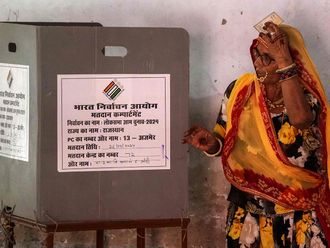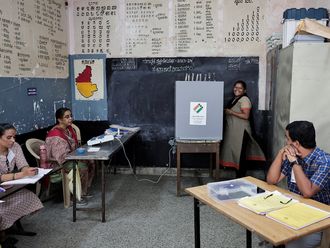Hyderabad: With the southwest monsoon season entering its second half and no sign of rains, a severe drought is staring in Telangana and Andhra Pradesh.
With a very harsh summer and deadly heatwave followed by a long dry spell in the first two months of the monsoon season, the agriculture sector was hit badly in both the states. Lack of rains has also depleted groundwater resources resulting in a lack of drinking water in the rural and urban areas. It has also caused hydel-power generation to come to a standstill in Telangana.
It’s impact on the agriculture sector was so bad that against the normal sowing of 4.143 million hectares (41 billion sqm), so far only 2.741 million hectares (27 billion sq metres) have been sowed in the nine districts of Telangana — that is only 66 per cent of the total area available.
In Andhra Pradesh, the situation is worse — against the normal area of 4.255 million hectares (42 billion sqm), only 1.286 million hectares (12 billion sqm) in the 13 districts of the state were used.
Jhansi Lakshmi, a senior official in Natural Calamities Evaluation section of the directorate of agriculture, said that the dry spell is having a bad impact on the crops, especially on the paddy. “Situation was not good because of the long dry spell. Only in the irrigated areas with water inflow, there is no problem”, she said.
This will be the second consecutive year when the rains are deficient in Telangana.
Andhra Pradesh enjoyed a good rainy spell in June, the first month of the monsoon season. But the consequent dry spell is continuing and even couple of low pressure areas in the Bay of Bengal have failed to break it.
Officials of Andhra Pradesh agriculture department are hopeful, however, that since most of the areas in the state are under an irrigation project, the situation would improve if there are good rains in the catchment areas of river Krishna elsewhere.
Within Andhra Pradesh, the traditionally drought-prone region of Rayalaseema and adjoining south coastal Andhra were worst affected by the monsoon failure. There was 36 per cent deficit of rainfall in Rayalaseema region.
The lack of rains has also led to depletion of water levels in major dams, affecting the supply of irrigation water from Nagarjuna Sagar and Srisailam dam projects over the river Krishna. Telangana’s projects over both Krishna and Godavari dams were hit by the low inflows, and there was no water supply for irrigation from Sriram Sagar across Godavari, Maner dam, and Jurala, Nagarjuna Sagar and Srisaialm dams over river Krishna.
What is significant is that the waters of both the major rivers and several projects are shared by both the states.
As far as the impact of the dry spell is concerned, Telangana is unlikely to suffer as badly as Andhra Pradesh would as the contribution of the agriculture sector to the gross state domestic product in Telangana is only 17 per cent against 27 per cent in Andhra Pradesh. This was a cause of concern for the officials of Andhra Pradesh who are already worried over the yawning revenue deficit following the bifurcation of the state. Weather officials say that the deficit rainfall in Andhra Pradesh and Telangana are as per their earlier forecast on account of the impact of El Nino.
M Narasimha Rao at the Indian Meteorological Centre at Hyderabad said that Telangana has received 16 per cent less rainfall than normal this year so far. “Parts of Telanana will receive only light to moderate rains and isolated thundershowers in the days to come”, he said, belying the hopes of any dramatic turnaround in the situation. With the dismal prospects of rains in the coming weeks, the drought situation is likely to worsen. Officials say moderate to heavy rains are their only hope.
On the whole 229 manuals (blocks) in six districts of Telangana and another six districts of Andhra Pradesh are likely to be declared drought-hit.
Consequent increases in the demand for power in Andhra Pradesh and Telangana are likely to worsen power shortages as well. Telangana will be more vulnerable as most of the power-generating stations are located in Andhra Pradesh, which can stop the supply of power to the other state.












